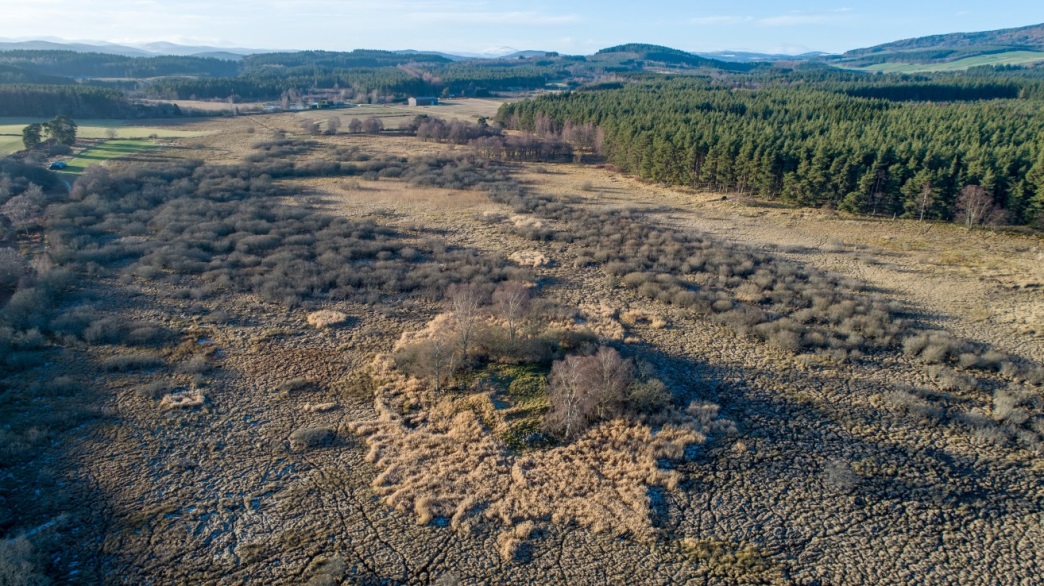
The Crannog Building
Readers may recall an announcement that we were planning a restoration project for the Loch of Leys, the area close to Crathes Castle and where the family lived on a Crannog of manmade island from the time they arrived in 1323 until the constructed the Castle. The project is ambitious and long-term and involves many interested parties. Consequently, we concluded that the initial meeting of those parties should be face to face and not zoomed. This has not been possible and we will probably proceed with more remote communication.
Those who have been to the Loch or read People and Painting will be aware of the silted up loch on which unwanted vegetation is on the increase.
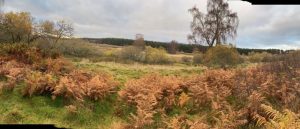
However, I have made one move to ‘whet the appetite’. Readers of People and Painting will recall the artists impression of Crathes as it would have been in 1783 according to archival and archaeological information. Jan Dunbar, who created that work of art, has done the same for the Crannog as we think that it may have been in the 14th century. Whilst it may not be the objective or the ability of the project to return the loch wholly to open water, I hope that something of this impression will be achievable
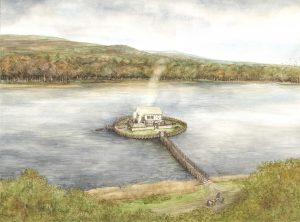
The foundation of the building on the loch are still clearly identifiable.
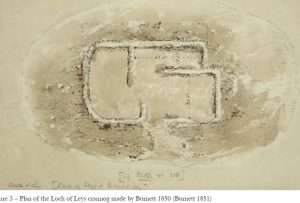
We will never know for certain what sort of building was on the Crannog but we view it as a stone ‘undercroft’ which would have been used for storage and accessed by the door in the SW corner which is in the front of the forestairs. They lead up to the main entrance (entrances at a higher level were common at this time for defence purposes).
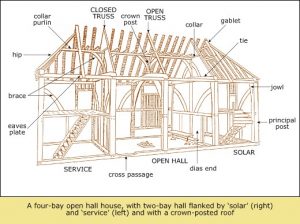
The main entrance leads into a timber framed structure on top of the undercroft which has a high hall in the middle which would have had a fire with smoke going up through a hole in the roof which may or may not have had some ceramic roof furniture (ridge tiles and some sort of chimney of which evidence has been found on a timber hall on a motte not very far away. On either side of the hall there would have been an extra floor for accommodation – bedrooms and the like. The kitchen was probably outside, as was the oven because of fire risks.
* * * * * *
Crathes Textile
I often receive from Burnetts, gifts which deserve to be displayed in the Castle. at Crathes and we have been particularly moved by a recent present of a quilted textile picture of the Castle.
Kitty Watt, a Burnett, sent me this one to add to that which she made for her sister, Ann Burnett, many years ago and which is on display in the Castle.
Kitty Burnett’s family came from Somerset, but because her father was a newspaper editor, he moved with the job. Kitty was born in Lincoln and brought up in Nottingham. She trained as a an orthopaedic nurse and physiotherapist, studied medicine and eventually became a GP. After retirement from full time work, she became an associate GP on the Island of Islay in Argyll. There, for her half-day off, she joined the Islay Quilters and became, in her own modest words, an enthusiastic amateur. She does tell me that infirmity now makes her work more difficult.
The quilt, which will be on display in the Family Room for next summer, is an example of the technique known as Top Stitch Piercing.
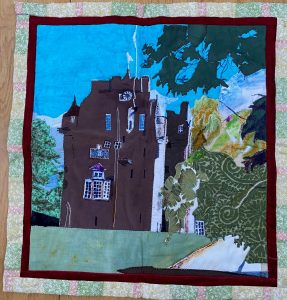
I did question the shade of the harling, but I did confirm that that it does darken very considerably after a fall of rain and if it is slightly darker than it might be, it is not an issue! The rain marked Castle below, which proudly shows off its new flag, demonstrates that she was not far off with the colour.
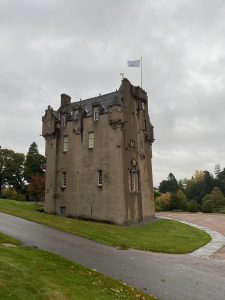
Kitty’s ties with Scotland remain strong. Her father in law, who came from Aberdeenshire, made sure that Burnett was correctly pronounced !
* * * * * *
An Unknown Burnett?
The untitled picture below came from the Castle and asking for a little attention. A little cleaning has made it acceptable, but the sitter and artist remain unknown. A little bit of refreshment has made her look quite respectable.
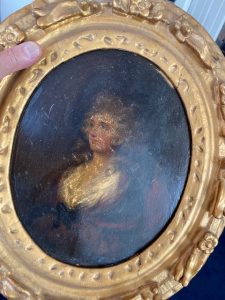
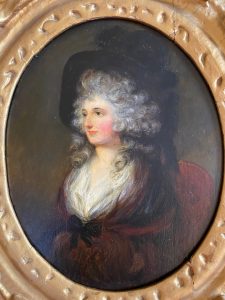
Despite my privileged position of being privy to information destroyed in the 1966 Castle fire, it would be wrong for me to establish the names of both. But if any reader can provide evidence that a Burnett lady, who was born towards the middle of the 18th century and might have known the artist, Thomas Gainsborough, I would be pleased to hear it.
Next on the list is Sir Godfrey Kneller’s portrait of Gilbert Burnett Bishop of Salisbury and who is in much in need of attention.
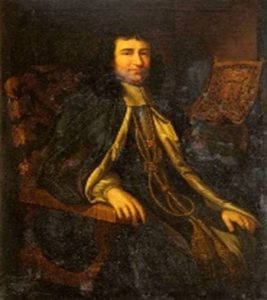
* * * * * *
Brian Sim
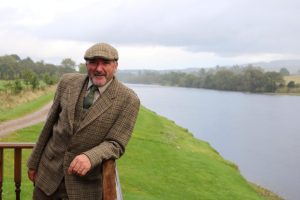
The end of the fishing season also marked the end of an era as Crathes Castle ghillie Brian Sim retired after twenty-five years on the river. Brian is known to Burnetts who have fished on our stretch of the river. He was born at Crathes, where his father, Sandy, was initially the chauffeur to my grandparents and later he was a joiner.
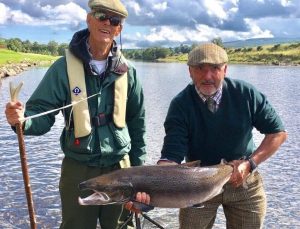
I quote the compliments recently paid by the River Board which was that Brian is a well-respected figure on the Dee and will be greatly missed by his rods and fellow ghillies, who enjoyed his expertise and his wicked sense of humour. In addition to him being a first-class ghillie, Brian was always keen to encourage youngsters into the sport by hosting junior days on the beat.
Brian will not be far away as he moves to Banchory and may well still be around to give guidance to Burnetts who wish to catch a salmon on the River Dee. We wish him a happy and healthy retirement



